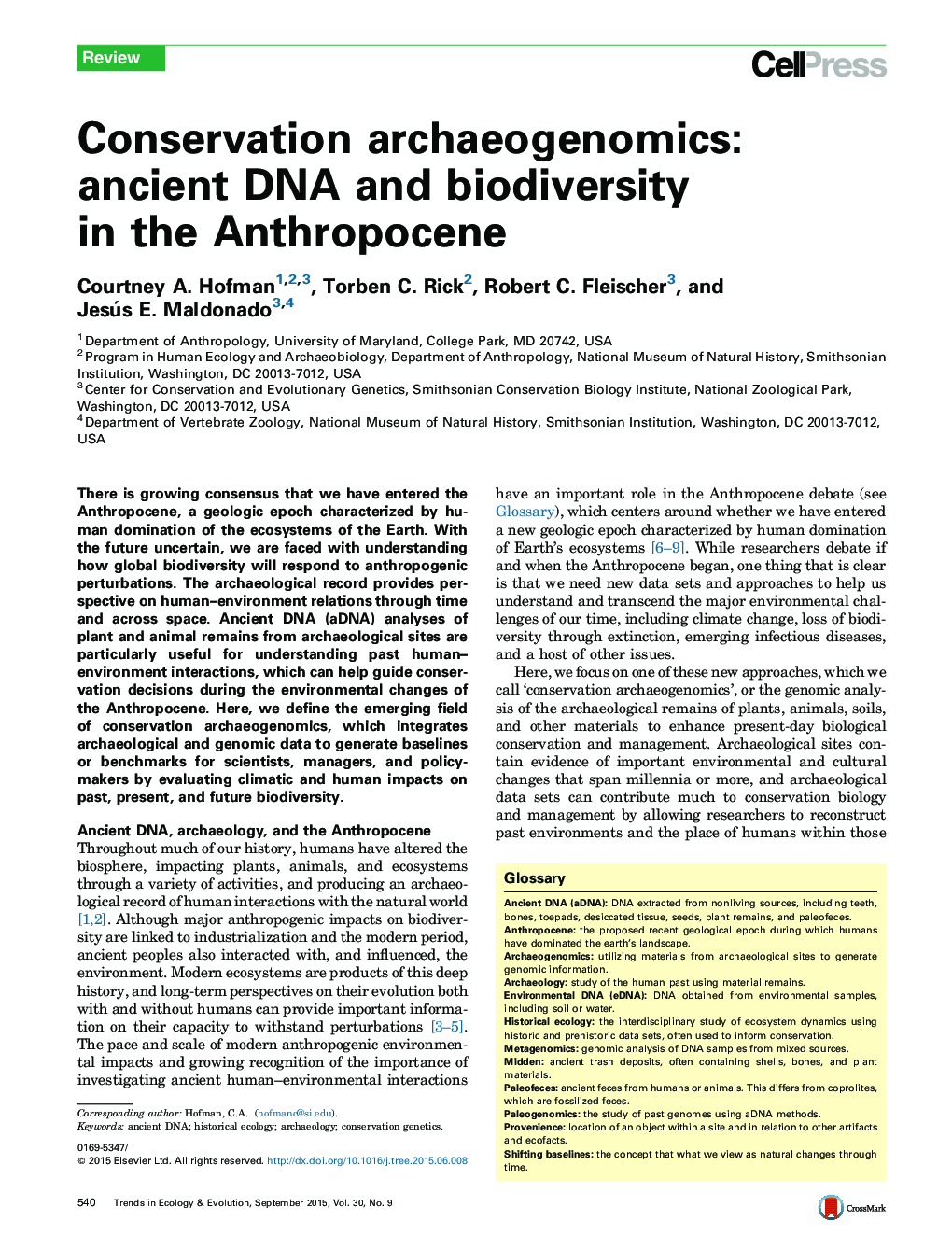| Article ID | Journal | Published Year | Pages | File Type |
|---|---|---|---|---|
| 142355 | Trends in Ecology & Evolution | 2015 | 10 Pages |
•Conservation archaeogenomics integrates archaeological data sets with genomics.•We focus on population and distribution changes, translocations, and extinction.•We explore archaeogenomics of ancient disease ecology and reconstruction of paleoecosystems.•Archaeogenomic data can inform conservation and management in the Anthropocene.
There is growing consensus that we have entered the Anthropocene, a geologic epoch characterized by human domination of the ecosystems of the Earth. With the future uncertain, we are faced with understanding how global biodiversity will respond to anthropogenic perturbations. The archaeological record provides perspective on human–environment relations through time and across space. Ancient DNA (aDNA) analyses of plant and animal remains from archaeological sites are particularly useful for understanding past human–environment interactions, which can help guide conservation decisions during the environmental changes of the Anthropocene. Here, we define the emerging field of conservation archaeogenomics, which integrates archaeological and genomic data to generate baselines or benchmarks for scientists, managers, and policy-makers by evaluating climatic and human impacts on past, present, and future biodiversity.
